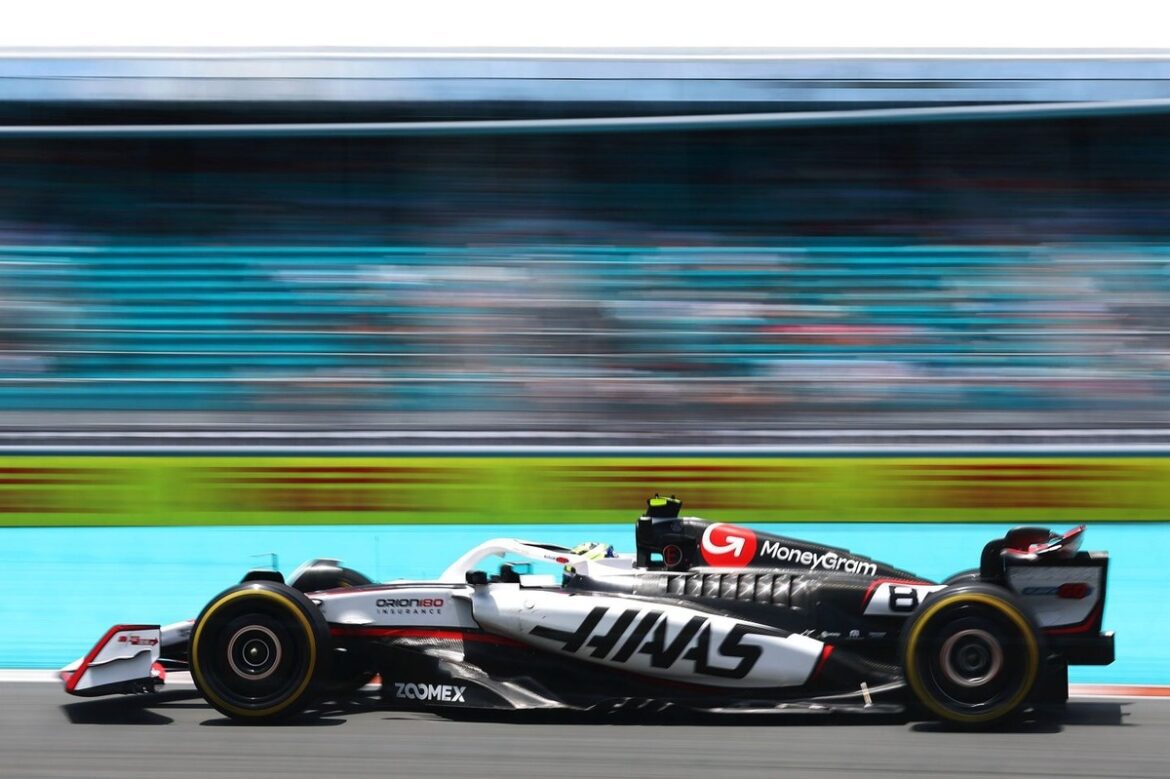Haas F1 Team Faces Challenges with Car Stability Ahead of Japanese Grand Prix
The Haas F1 Team is currently navigating a period of uncertainty regarding the stability of its car, particularly in high-speed corners. Team principal Ayao Komatsu candidly expressed his concerns while discussing the team’s progress during the Miami Grand Prix. The team has been working tirelessly to address the ongoing issue of vertical oscillation, a problem that has been troubling their VF-25 car.
In a bid to improve the car’s performance, Haas has fast-tracked a series of experimental modifications to the floor design, specifically for the upcoming Japanese Grand Prix. This decision meant bypassing the traditional simulation processes that teams usually rely on to test new components. Although the initial results from these adjustments seem promising—helping to reduce the VF-25’s tendency to experience instability in high-speed corners—the team still grapples with unpredictability. Komatsu elaborated on the challenges, noting that they are still unable to accurately predict when and where these oscillations will occur, which is critical information for optimizing race performance.
The unpredictability of the VF-25’s behavior is particularly concerning during sprint weekends, where the schedule is compressed, allowing only one practice session. Komatsu remarked on the difficulties this creates: “If we had a standard weekend, we would spend most of Friday—at least half of it—trying to determine if we have this oscillation issue or not.” Ideally, the team would prefer to focus on refining the car’s balance and working on tire performance during the first practice session, rather than spending precious track time diagnosing a problem. This challenge is intensified on sprint weekends, where the time to make critical adjustments is limited.
The phenomenon of high-speed oscillation has become more prevalent since the introduction of the current ground-effect regulations in Formula 1. To maximize downforce, cars must operate as close to the track surface as possible. However, if a car gets too close, the airflow beneath the car can stall, leading to uncontrollable vertical oscillations. Addressing this issue requires a careful balance between aerodynamics and suspension settings, making it difficult to simulate effectively in a lab setting. This lack of precise modeling caught Haas off guard during the first event of the season.
During the second round of the championship in China, the smoother track surface and limited number of high-speed corners allowed the VF-25 to perform without showcasing the oscillation issue. However, this temporary reprieve did not imply that the problem was resolved or fully understood. As the team looks forward to the upcoming upgrades at Imola, the situation remains uncertain. Komatsu acknowledged the ongoing struggle, stating, “I wouldn’t say we have a completely full grasp on it, because if we did, we would be confident in implementing a solution that entirely eliminates the issue.”
The complexities of the VF-25’s dynamics remain a challenge for the Haas team. Although they have made some progress in understanding certain dimensions of the car’s behavior, there are still critical aspects that remain unclear. Komatsu expressed that while some improvements have been made during testing, the team is still not entirely confident in their understanding of the conditions that lead to these oscillations. “Every time we run, it gets better,” he said, emphasizing the importance of continuous testing. The aim is to achieve a level of robustness and consistency that would allow Haas to compete firmly within the midfield pack.
As the Haas F1 Team prepares for the upcoming race at Imola, the anticipation is palpable. The potential upgrades are crucial for improving the car’s performance and stability. However, the uncertainty surrounding the VF-25’s behavior adds an extra layer of complexity to the team’s preparations. Komatsu’s candid insights illustrate the challenges that teams face as they strive to push the limits of performance while managing the inherent risks of high-speed racing.
In the fast-paced world of Formula 1, teams must be agile and adaptive, responding quickly to challenges that arise on the track. The Haas F1 Team’s experience serves as a reminder of the intricate engineering and strategic planning involved in modern racing. As they continue to refine their car and tackle the issues that have arisen, the focus remains on competing effectively and consistently in the highly competitive midfield.
The upcoming Japanese Grand Prix will be a critical moment for the Haas F1 Team, not just in terms of performance, but also as an opportunity to test the effectiveness of their recent modifications. The complexities of high-speed oscillation highlight the ongoing evolution of car design and the continuous need for innovation in the sport. For Haas, the journey to stability and performance is a vital aspect of their campaign, and the results at Imola will be closely watched by fans and competitors alike.
In summary, the Haas F1 Team faces a challenging road ahead as they work to address the stability issues of the VF-25 car. With the upcoming upgrades and a focus on enhancing performance, the team is determined to make strides in the competitive landscape of Formula 1. As they navigate the intricacies of car dynamics and aerodynamics, the commitment to improvement and success remains at the forefront of their efforts.
